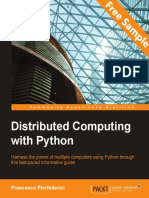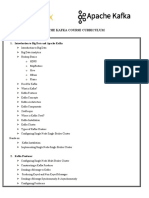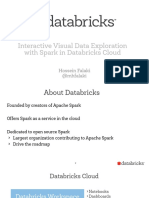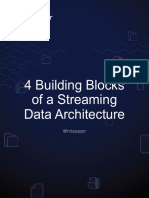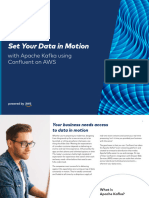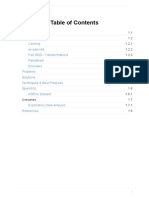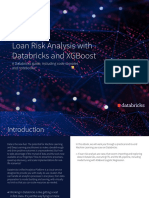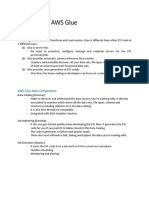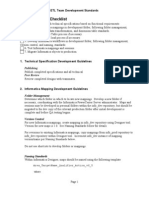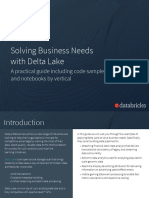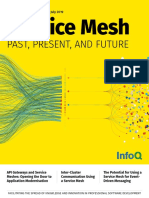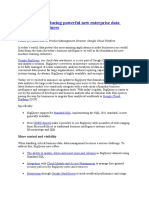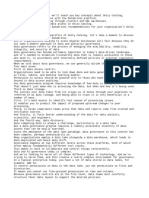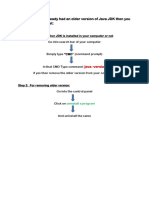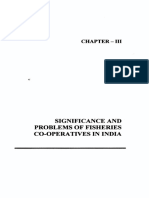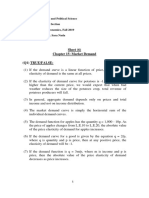Modern Data Pipelines
Ryan Knight
James Ward
TODO
@
_JamesWard
@
• Distributed Systems guru
• Scala, Akka, Cassandra Expert & Trainer
• Skis with his 5 boys in Park City, UT
• First time to jFokus
Ryan Knight
Architect at Starbucks
• Back-end Developer
• Creator of WebJars
• Blog: www.jamesward.com
• Not a JavaScript Fan
James Ward • In love with FP
Developer at Salesforce
Agenda
• Modern Data Pipeline Overview
• Kafka Code
• Akka Streams github.com/jamesward/koober
• Play Framework
• Flink
• Cassandra
• Spark Streaming
Modern Data Pipelines
Real-Time, Distributed, Decoupled
Why Streaming Pipelines
Real Time Value
• Allow business to react to data in real-time instead of batch
Real Time Intelligence
• Provide real-time information so that the apps can use the information
and adapt their user interactions
Distributed data processing that is both scalable and resilient
Clickstream analysis
Real-time anomaly detection
Instant (< 10 s) feedback - ex. real time concurrent video viewers / page
views
Data Pipeline Requirements
• Ability to process massive amounts of data
• Handle data from a wider variety of sources
• Highly Available
• Resilient - not just fault tolerant
• Distributed for Scale of Data and Transactions
• Elastic
• Uniformity - all-JVM based for easy deployment and management
Traditional ETL
Data Integration Today
Data Pipelines today
http://ferd.ca/queues-don-t-fix-overload.html
Backpressure
http://ferd.ca/queues-don-t-fix-overload.html
Data Hub / Stream Processing
Pipeline Architecture
Spark
Notebook
Web Client
Flink
Spark
core, streaming,
graphx, mllib, ...
Play App
Spark
Kafka Cassandra
Streaming
Cold Data
Koober
github.com/jamesward/koober
Kafka
Distributed Commit Logs
What is Kafka?
Kafka is a distributed and partitioned commit log
Replacement for traditional message queues and publish subscribe
systems
Central Data Backbone or Hub
Designed to scale transparently with replication across the cluster
Core Principles
1. One pipeline to rule them all
2. Stream processing >> messaging
3. Clusters not servers
4. Pull Not Push
Kafka Characteristics
Scalability of a filesystem
• Hundreds of MB/sec/server throughput
• Many TB per server
Durable - Guarantees of a database
• Messages strictly ordered
• All data persistent
Distributed by default
• Replication
• Partitioning model
Kafka is about logs
The Event Log
Append-Only Logging
Database of Facts
Disks are Cheap
Why Delete Data any more?
Replay Events
Append Only Logging
Logs: pub/sub done right
Kafka Overview
• Producers write data to brokers.
• Consumers read data from brokers.
• Brokers - Each server running Kafka is called a
broker.
• All this is distributed.
• Data
– Data is stored in topics.
– Topics are split into partitions, which are
replicated.
• Built in Parallelism and Scale
http://www.michael-noll.com/blog/2013/03/13/running-a-multi-broker-apache-kafka-cluster-on-a-single-node/
Partitions
A topic consists of partitions.
Partition: ordered + immutable sequence of messages
that is continually appended to
Partition offsets
• Offset: messages in the partitions are each assigned a unique
(per partition) and sequential id called the offset
• Consumers track their pointers via (offset, partition, topic) tuples
Consumer group C1
Example:
A Fault-tolerant CEO Hash Table
Operations
Final State
Kafka Log
Heroku Kafka
• Managed Kafka Cloud Service
• https://www.heroku.com/kafka
Code
Akka Streams
Reactive Streams Built on Akka
Reactive Streams
A JVM standard for asynchronous stream processing with non-blocking back pressure
Akka Streams
• Powered by Akka Actors
• Impl of Reactive Streams
• Actors can be used directly or just internally
• Stream processing functions: map, filter, fold, etc
Sink & Source
val source = Source.repeat("hello, world")
val sink = Sink.foreach(println)
val flow = source to sink
flow.run()
Code
Play Framework
Web Framework Built on Akka Streams
Play Framework
Scala & Java – Built on Akka Streams
Declarative Routing:
GET /foo controllers.Foo.do
Controllers Hold Stateless Functions:
class Foo {
def do() = Action {
Ok("hello, world")
}
}
Reactive Requests
Don't block in wait states!
def doLater = Action.async {
Promise.timeout(Ok("hello, world"), 5.seconds)
}
def reactiveRest = Action.async {
ws.url("http://api.foo.com/bar").get().map { response =>
Ok(response.json)
}
}
WebSockets
Built on Akka Streams
def ws = WebSocket.accept { request =>
val sink = ...
val source = ...
Flow.fromSinkAndSource(Sink.ignore, source)
}
Views
Serverside Templating with a Subset of Scala
app/views/blah.scala.html Action {
Ok(views.html.blah("bar"))
}
@(foo: String)
<html> <html>
<body> <body>
@foo bar
</body> </body>
</html> </html>
Demo & Code
Flink
Real-time Data Analytics
Flink
Real-time Data Analytics
• Bounded & Unbounded Data Sets
• Stream processing
• Distributed Core
• Fault Tolerant
• Clustered
• Flexible Windowing
Apache Flink
Continuous Processing for Unbounded Datasets
count() 5
Windowing
Bounding with Time, Count, Session, or Data
1s 1s count() 3
2
Batch Processing
Stream Processing on Finite Streams
count() 4
Data Processing
What can we do?
• Aggregate / Accumulate fold(), reduce(), sum(), min()
• Transform map(), flatMap()
• Filter λ filter(), distinct()
• Sort sortGroup(), sortPartition()
Apache Flink
Architecture
Partitioning
Network Distribution
Demo & Code
Cassandra
Distributed NoSQL Database
Challenges with Relational Databases
• How do you scale and maintain high-availability with a
monolithic database?
• Is it possible to have ACID compliant distributed transactions?
• How can I synchronize a distributed data store?
• How do I resolve differing views of data?
Goals of a Distributed Database
• Consistency is not practical - give it up!
• Manual sharding & rebalancing is hard - Automatic
Sharding!
• Every moving part makes systems more complex
• Master / slave creates a Single Point of Failure / Bottleneck
- Simplify Architecture!
• Scaling up is expensive - Reduce Cost
• Leverage cloud / commodity hardware
What is Cassandra?
Distributed Database
✓ Individual DBs (nodes)
✓ Working in a cluster C*
✓ Nothing is shared
Confidential
Cassandra Cluster
• Nodes in a peer-to-peer cluster
• No single point of failure
• Built in data replication
• Data is always available
• 100% Uptime
• Across data centers
• Failure avoidance
Confidential
Multi-Data Center Design
Why Cassandra?
It has a flexible data model
Tables, wide rows, partitioned and distributed
✓ Data
✓ Blobs (documents, files, images)
✓ Collections (Sets, Lists, Maps)
✓ UDTs
Access it with CQL ← familiar syntax to SQL
Confidential
Two knobs control Cassandra fault tolerance
Replication Factor (server side)
How many copies of the data should exist?
RF=3
Write A
A B
CD AD
Client
D C
BC AB
Two knobs control Cassandra fault tolerance
Consistency Level (client side)
How many replicas do we need to hear from before we acknowledge?
CL=ONE CL=QUORUM
A B A B
Write A Write A
CD AD CD AD
Client Client
D C D C
BC AB BC AB
Consistency Levels
Applies to both Reads and Writes (i.e. is set on each query)
ONE – one replica from any DC
LOCAL_ONE – one replica from local DC
QUORUM – 51% of replicas from any DC
LOCAL_QUORUM – 51% of replicas from local DC
ALL – all replicas
TWO
Consistency Level and Speed
How many replicas we need to hear from can affect
A B
how quickly we can read and write data in CD AD
Read A
Cassandra? 5 µs ack
(CL=QUORUM)
Client 300 µs ack
12 µs ack
D 12 µs ack
C
BC AB
Consistency Level and Availability
Consistency Level choice affects availability
For example, QUORUM can tolerate one replica being down
and still be available (in RF=3)
A B
CD AD
Read A
(CL=QUORUM) A=2
Client A=2
A=2
D C
BC AB
Reads in the cluster
Same as writes in the cluster, reads are coordinated
Any node can be the Coordinator Node
A B
CD AD
Client
Read A
(CL=QUORUM) D C
BC AB
Coordinator Node
Spark Cassandra Connector
Spark Cassandra Connector
Data locality-aware (speed)
Read from and Write to Cassandra
Cassandra Tables Exposed as RDD and DataFrames
Server-Side filters (where clauses)
Cross-table operations (JOIN, UNION, etc.)
Mapping of Java Types to Cassandra Types
●70
Code
Spark Streaming
Stream Processing Built on Spark
Hadoop?
Hadoop Limitations
• Master / Slave Architecture
• Every Processing Step requires Disk IO
• Difficult API and Programming Model
• Designed for batch-mode jobs
• No even-streaming / real-time
• Complex Ecosystem
What is Spark?
Fast and general compute engine for large-scale data processing
Fault Tolerant Distributed Datasets
Distributed Transformation on Datasets
Integrated Batch, Iterative and Streaming Analysis
In Memory Storage with Spill-over to Disk
Advantages of Spark
• Improves efficiency through:
• In-memory data sharing
• General computation graphs - Lazy Evaluates Data
• 10x faster on disk, 100x faster in memory than Hadoop MR
• Improves usability through:
• Rich APIs in Java, Scala, Py..??
• 2 to 5x less code
• Interactive shell
Spark Components Hosting
Spark Master UI
Spark Master
Hosting :7080
Application UI
:4040 A Process which Manages the
Application
(Spark Driver) Resources of the Spark Cluster
You application code
which creates the SparkContext
Worker
Worker
Worker
Worker
Worker
A process which shells out to create
a Executor JVM
These processes are all separate and require networking
to communicate
Resilient Distributed Datasets (RDD)
• The primary abstraction in Spark
• Collection of data stored in the Spark Cluster
• Fault-tolerant
• Enables parallel processing on data sets
• In-Memory or On-Disk
RDD Operations
Transformations - Similar to scala collections API
Produce new RDDs:
filter, flatmap, map, distinct, groupBy,
union, zip, reduceByKey, subtract
Actions - Require materialization of the records to generate a value
collect: Array[T], count, fold, reduce..
DataFrame
• Distributed collection of data
• Similar to a Table in a RDBMS
• Common API for reading/writing data
• API for selecting, filtering, aggregating
and plotting structured data
DataFrame Part 2
• Sources such as Cassandra, structured data files, tables in
Hive, external databases, or existing RDDs.
• Optimization and code generation through the Spark SQL
Catalyst optimizer
• Decorator around RDD - Previously SchemaRDD
Spark Versus Spark Streaming
Spark Streaming Data Sources
Spark Streaming General Architecture
DStream Micro Batches
Windowing
Windowing
Streaming Resiliency without Kafka
• Streaming uses aggressive checkpointing and in-memory data replication to improve
resiliency.
• Frequent checkpointing keeps RDD lineages down to a reasonable size.
• Checkpointing and replication mandatory since streams don’t have source data files to
reconstruct lost RDD partitions (except for the directory ingest case).
• Write Ahead Logging to prevent Data Loss
Direct Kafka Streaming w/ Kafka Direct API
• Use Kafka Direct Approach (No Receivers)
• Queries Kafka Directly
• Automatically Parallelizes based on Kafka Partitions
• (Mostly) Exactly Once Processing - Only Move Offset after
Processing
• Resiliency without copying data
Demo & Code



